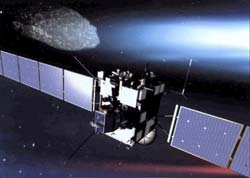
Chase a fast-moving comet, land on it and ’ride’ it while it speeds up towards the Sun: not the script of a science-fiction movie, but the very real task of ESA’s Rosetta spacecraft.
New observations with the European Southern Observatory’s (ESO) Very Large Telescope (VLT) provide vital information about Comet Wirtanen – Rosetta’s target – to help ESA reduce uncertainties in the mission, one of the most difficult ever to be performed.
Every 5.5 years Comet Wirtanen completes an o

The Sagittarius dwarf galaxy is our nearest neighbor. Yet it has been discovered only recently, in 1994, being hidden by the stars and dust in our own Galaxy, the Milky Way. It is however possible today to better know this companion galaxy, thanks to variable stars, the RR Lyrae, in which Sgr-dw is particularly rich. In a recent paper, Patrick Cseresnjes, from Paris Observatory, shows for the first time that Sgr-dw is not typical of other satellites of the Milky Way, but reveals instead striking simi
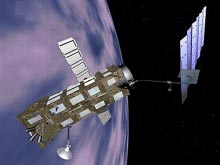
During the night of 28 February/1 March, Envisat, ESA’s most powerful and sophisticated Earth observation satellite, will be launched by an Ariane 5 rocket from Europe’s spaceport in Kourou at 22:07 hrs Kourou time (02:07 hrs CET).
Built by a consortium of 50 companies led by Astrium, Envisat is the successor to ESA’s ERS satellites. With an array of ten instruments to monitor land, oceans, atmosphere and ice caps, it will provide the most complete set of observations ever achieved, to hel

“Nuclear fusion” is the melting of light nuclei into heavier ones, a process that according to the laws of physics releases enormous amounts of energy. For the past 50 years many scientists have sought ways of harnessing this fusion reaction under controlled reactor conditions as a safe, clean and practically inexhaustible source of energy. Siegbert Kuhn and his team at the Institute of Theoretical Physics at Innsbruck University are making a major contribution to these efforts and positioning Austri
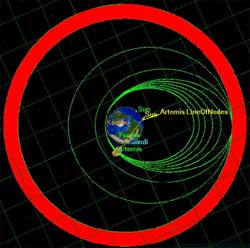
Thanks to ion propulsion, the Artemis mission is turning near-defeat into a success story. Nominal operations could start this summer, with ESA’s satellite, manufactured by Alenia Spazio as prime contractor (I), playing a significant role in the pursuit of high technology and advanced telecommunications.
On 12 July 2001, 30 minutes after lift-off from Europe’s spaceport in Kourou, French Guiana, it became apparent that the Ariane 5 launcher had propelled the Artemis satellite into a transf

Proceedings of the Royal Society Series A Vol. 458, No. 2019 Cover Date 8 March 2002
Christiaan Huygens` observations in 1665 of anti-phase synchronisation in two pendulum clocks were the subject of some of the earliest deliberations of The Royal Society but have remained a scientific puzzle. Huygens` acute observations are often quoted but have never been adequately explained – until today. The forthcoming issue of Proceedings A, a Royal Society journal, offers a simple and compelli

Researchers from the Technology Foundation STW and the University of Twente, in cooperation with Smit Transformatoren and Smit Draad, have developed a prototype coil for a superconducting transformer which is not only light and compact but also energy-efficient. A keen interest has already been expressed by several companies.
The coil is made from superconducting wires, insulated using a newly patented method. Furthermore, together with Smit Transformatoren the researchers have developed a m

In the powerful, fast-fading realm of gamma-ray bursts, scientists say they have detected for the first time a lingering afterglow of the shortest types of bursts, which themselves disappear within a second.
This afterglow, radiating in X rays, may provide crucial insight into what triggers the mysterious bursts, the most energetic explosions in the Universe, second only to the big bang in total power. Previously, scientists had only detected the afterglow of longer bursts, which can last fr

Interstellar travellers should be “motivated, tolerant and nice”.
One hundred and sixty fertile, motivated, English speakers could make it to distant stars, researchers have worked out. But generations down the line, returning voyagers may speak an alien tongue.
Travel to planets orbiting other stars will soon be technically possible, the meeting of the American Association for the Advancement of Sciences in Boston heard last week. But the 200-year odyssey will require a cer
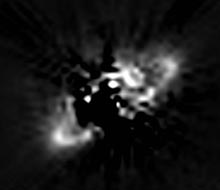
Markus Landgraf of the European Space Agency and colleagues (*) have found the first direct evidence that a bright disc of dust surrounds our Solar System, starting beyond the orbit of Saturn.
Remarkably, their discovery gives astronomers a way to determine which other stars in the Galaxy are most likely to harbour planets and allows mission planners to draw up a ’short-list’ of stars to be observed by ESA’s future planet-search missions, Eddington and Darwin.
The discovery of th
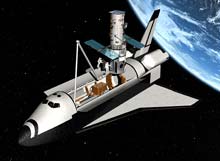
After nearly 12 years of incredible scientific discoveries, the ESA/NASA Hubble Space Telescope orbiting Earth is about to have another service visit. The purpose is to upgrade Hubble system and to install newer and more powerful instruments that will astoundingly increase Hubble’s discovery capabilities and extend the longevity of the observatory.
As a unique collaboration between the European Space Agency (ESA), and NASA, Hubble has had a phenomenal scientific impact. The unsurpassed sha
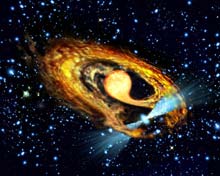
Combining Hubble Space Telescope images with radio observations has revealed a highly unusual system consisting of a fast spinning pulsar and a bloated red companion star. The existence of the system is something of a mystery – the best explanation so far is that we have our first view of a millisecond pulsar just after it has been `spun up` by its red companion star.
Although more than 90 specimens of the exotic species of fast-spinning `millisecond pulsars` are known today, no observation

A supernova may have caused mass extinction two million years ago.
The explosion of a dying star could have ended much of marine life on Earth two million years ago. The supernova could have strafed the Earth’s atmosphere with cosmic rays, severely damaging the ozone layer and exposing living organisms to high levels of the Sun’s hazardous ultraviolet rays, US researchers propose 1 .
This idea dates back to the 1950s, but now Narciso Benítez of Johns Hopkins
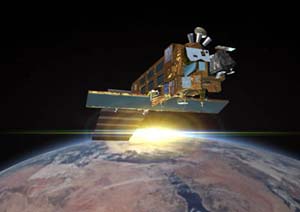
Envisat, whose launch is scheduled end of February 2002, will tirelessly sweep the Earth`s surface and atmosphere, using a suite of ten different scientific instruments.
Over a 35-day cycle, the satellite`s orbit will cover the entire planet, and then start all over again. Two thirds of the time it will be over water. Because of the sheer size of the oceanic currents, the complexity of thermal exchanges, and ocean-atmosphere coupling, the ocean is a crucial factor in explaining the w
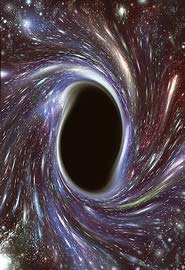
Miniature physics phenomena could show hidden shades of space.
An event horizon is dawning in laboratories. Using frozen light, physicists hope to mimic this peculiar cosmic phenomenon and glimpse something like the belches of a black hole.
At the event horizon – the rim of a voracious black hole – dimensions as we know them disappear. To an observer on a spaceship, light and time appear to stand still. A floating spaceman would seem to slow and stop.
“It’s very d
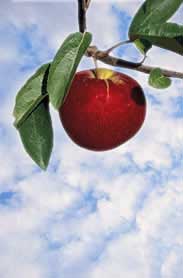
Researchers finally measure the subtle quantum effects of fourth fundamental force.
Far from falling smoothly, objects moving under gravity do so in lurching, quantum leaps, a French experiment has revealed 1 . The finding confirms that gravity, like the Universe’s three other fundamental forces, can have a quantum effect.
Particles, such as electrons confined to their orbital shells around the nucleus of an atom, are restricted by the rules of quantum mechan